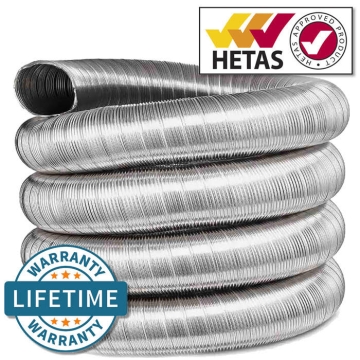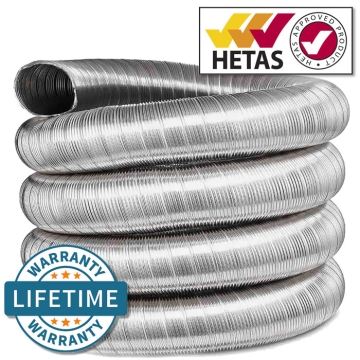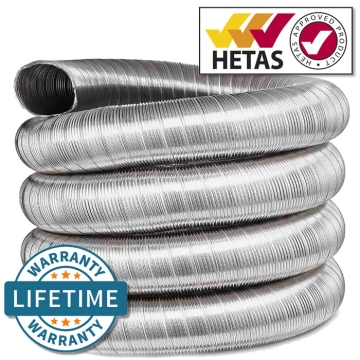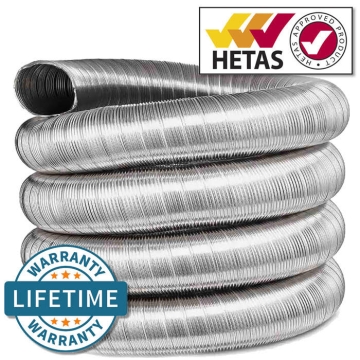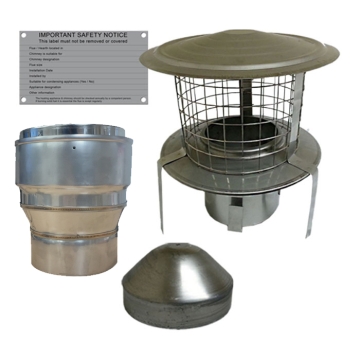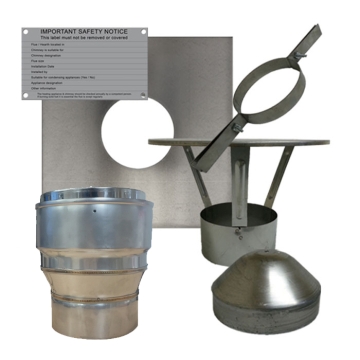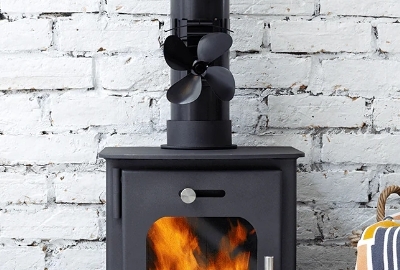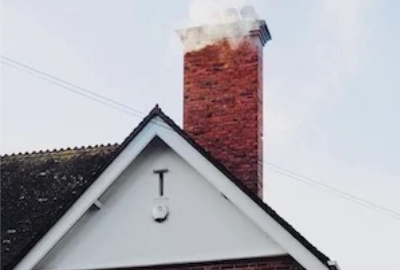Flue Liner
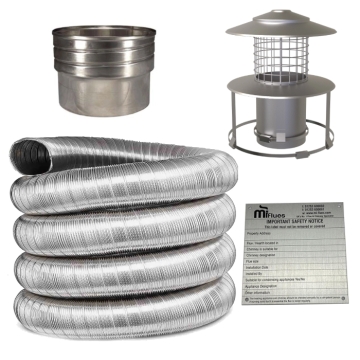

-
Includes 10m flue liner, adaptor, cowl & chimney plate
-
Durable 316/316 Stainless Steel Twin-skin flue liner
-
Suitable for wood, coal, oil, gas & cured dry peat stoves
-
Designed for simple connection & secure chimney relining
-
Smooth internal wall for optimal draft & reduced soot build-up
In Stock
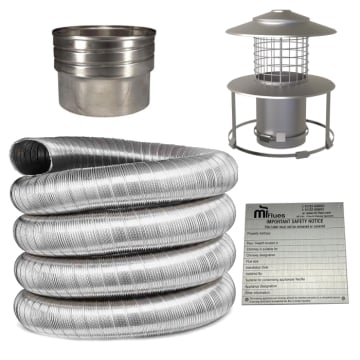

-
Includes 10m flue liner, adaptor, cowl & chimney plate
-
Durable 904/904 Stainless Steel Twin-skin flue liner
-
Suitable for wood, coal, oil, gas & cured dry peat stoves
-
Designed for simple connection & secure chimney relining
-
Smooth internal wall for optimal draft & reduced soot build-up
In Stock
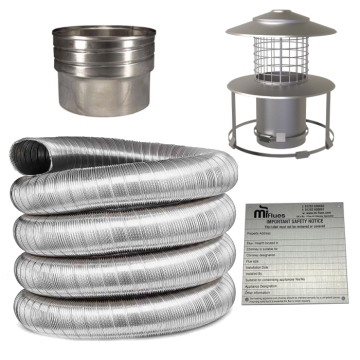

-
Includes 10m flue liner, adaptor, cowl & chimney plate
-
Durable 316/316 Stainless Steel Twin-skin flue liner
-
Suitable for wood, coal, oil, gas & cured dry peat stoves
-
Designed for simple connection & secure chimney relining
-
Smooth internal wall for optimal draft & reduced soot build-up
In Stock


- Includes 10m flue liner, adaptor, cowl & chimney plate
- Durable 904/904 Stainless Steel Twin-skin flue liner
- Suitable for wood, coal, oil, gas & cured dry peat stoves
- Designed for simple connection & secure chimney relining
- Smooth internal wall for optimal draft & reduced soot build-up
In Stock
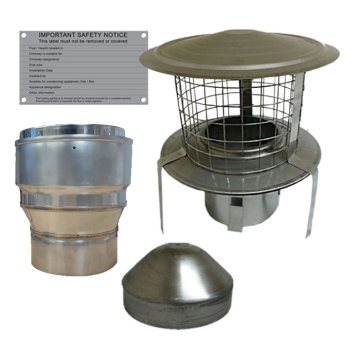

-
Installation kit designed for 125mm flexible flue liners.
-
Increasing Adapter 100mm pipe to 125mm liner.
-
Pot Hanging Cowl that ensures secure liner suspension.
-
Nose cone simplifies flue liner feed through the chimney.
-
Chimney Notice Plate that meets UK building regulations
In Stock
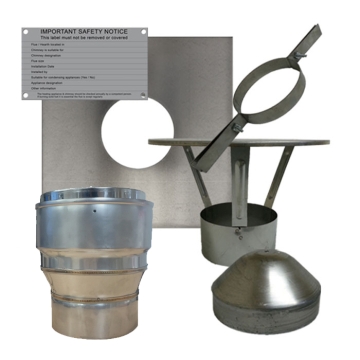
PayPal Credit Example of a £500 purchase
Instalments
6 Months (over £99)
- Minimum Spend: £99
- Monthly Instalment: £86.87
- Instalment Rate: 14.9% APR
- Cost of Purchase: £500.00
- Total inc. Interest: £520.57
12 Months (over £99)
- Minimum Spend: £99
- Monthly Instalment: £44.89
- Instalment Rate: 14.9% APR
- Cost of Purchase: £500.00
- Total inc. Interest: £538.64
24 Months (over £199)
- Minimum Spend: £199
- Monthly Instalment: £24.00
- Instalment Rate: 14.9% APR
- Cost of Purchase: £500.00
- Total inc. Interest: £575.98
36 Months (over £499)
- Minimum Spend: £499
- Monthly Instalment: £17.09
- Instalment Rate: 14.9% APR
- Cost of Purchase: £500.00
- Total inc. Interest: £614.93
0% for 4 Months
4 Months (over £99)
- Minimum Spend: Over £99
- Monthly Instalment: min monthly payment
- Instalment Rate: 0% APR
- Cost of Purchase: £500.00
- Total inc. Interest: £500.00
Representative Example
Purchase rate: 23.9% p.a. (variable)Representative: 23.9% APR (variable)
Assumed Credit Limit: £1,200
To learn more about PayPal Credit click here
Chimney Flue Liner
Here you'll find a wide chimney flue liner range with flexible options for your wood burning stove installation process. A good quality flue liner can last up to 25 years if maintained correctly and used with the right type of fuel, so it is well worth investing in the best. Rest assured, we only stock the highest quality flue liner for chimneys here at StovesAreUs.
There are two different grades of flexible flue liner available in this range: 316 grade flue liner and 904 grade flue liner. We recommend 316 for stoves that will be used for burning seasoned wood and for the occasional use of smokeless coal. 904 grade, on the other hand, is recommended for hard working stoves that burn a mix of seasoned wood and smokeless coal or smokeless coal on its own. Both of the good quality flue liners that we supply are Hetas approved and should last up to 25 years if maintained correctly and you use the right type of fuel.
How to install chimney flue
- Select a liner that suits your appliance and fuel type — typically a 316 or 904 grade liner for multi-fuel or wood-burning stoves.
- Prepare the chimney and ensure it is swept and free from debris.
- From the top of the chimney, carefully lower the flue liner down to the fireplace opening, making sure the arrows on the liner point in the direction of flue gases (usually downwards).
- Secure the bottom of the liner to a stove pipe. A register plate may be used to seal the chimney base.
- Fit a top plate and clamp or use a cowl system to secure the liner at the chimney pot.
While competent DIYers may install a liner themselves, we recommend using a HETAS-registered installer to ensure compliance with Building Regulations.
Frequently Asked Questions
Do I need a flue liner for my chimney?Although it is not a legal requirement to fit a flue liner with a stove, most stove retailers and HETAS installers recommend that you do. Without a flue liner, it is difficult to determine the quality and performance of the chimney. Issues like poor flue draught, lighting difficulties and shorter burn times are less likely to occur if you opt to fit a flexible liner.
What are the benefits of flue liners?One of the most significant benefits of flue liners is ensuring a safer chimney. Older chimneys often require a flexible flue liner solution as over time they can lose their structural integrity and/or become worn. The liner can also increase efficiency by insulating the flue gases and keeping them warm as they travel upwards to promote good draught.
What size flue liner do I need?When buying a log burner, gas stove, or multi-fuel stove from us, you’ll be provided with the diameter of the flue collar within the specifications — this is often a good guide to gauge the size of liner required for the stove. However, the size of the stove collar does not always correspond to the size of the flue liner you’ll need, so ensure you check the manufacturer's instructions before you purchase a flue liner.
When measuring the length of your flue liner, you must ensure it is long enough to reach from the top of your chimney to the bottom of the fireplace opening. We recommend ordering an extra metre or two of flue liner to cater for any bends or offsets that you may have within your chimney space. In this collection, you’ll find 5-inch, 6-inch, 7-inch, and 8-inch stainless steel flue liners.
Shop the chimney flue lining range at StovesAreUs today and get a HETAS-approved product with a lifetime warranty. And don’t forget to browse even more of our chimney essentials for chimney flue systems, flue pipes, and chimney cowls.






